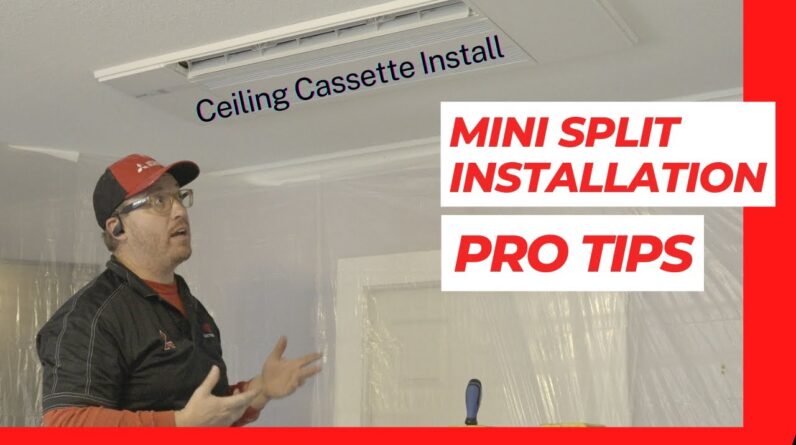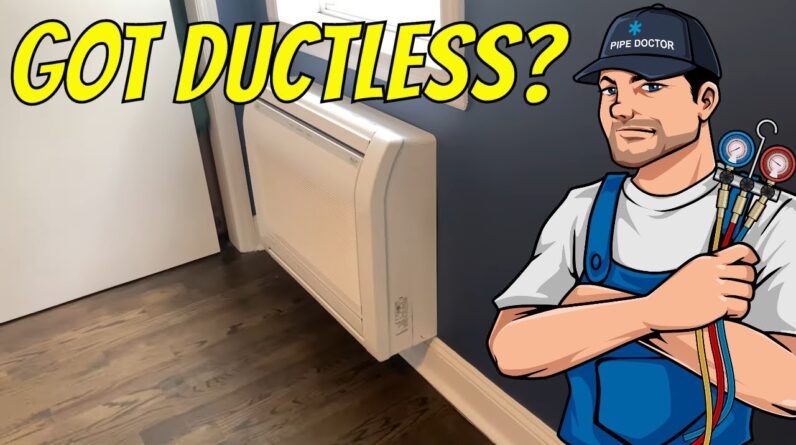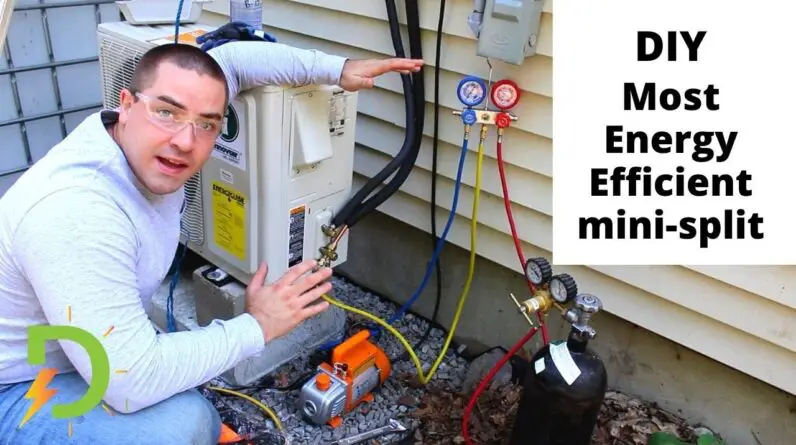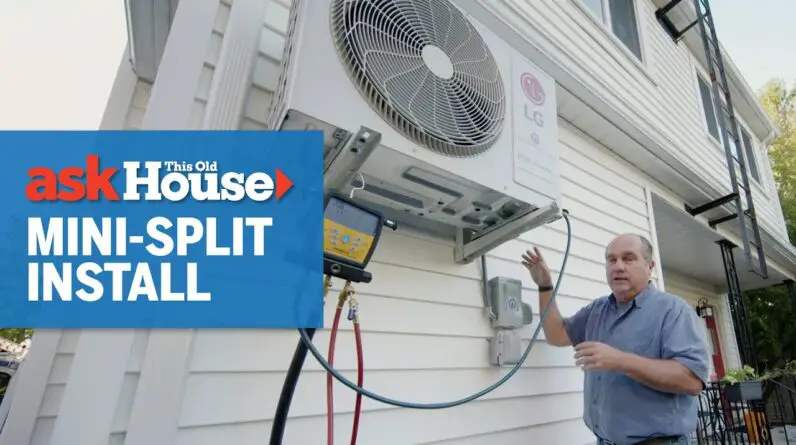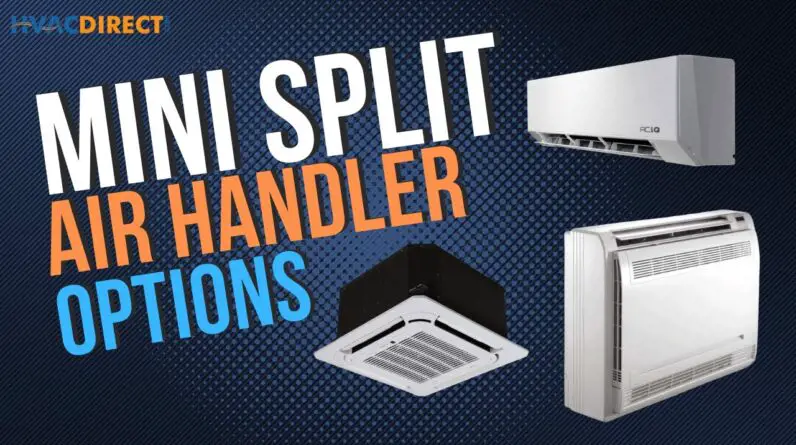Installing a Mini Condensate Pump on a Mini-Split System: A Comprehensive Guide
In today’s HVAC industry, managing condensate efficiently is crucial for ensuring the longevity and performance of air conditioning systems. This article will guide you through the installation of an Aspen Mini Orange condensate pump, a reliable and versatile pump designed to handle the condensate in mini-split systems where gravity drainage isn’t possible.
Introduction to Mini Condensate Pumps
Mini condensate pumps are specifically designed to handle the water that drips off the evaporator coil during the cooling process. This water, also known as condensate, needs to be efficiently drained away from the system to prevent damage and ensure optimal performance. In mini-split systems, particularly those installed in challenging locations where gravity drainage is not an option, a condensate pump like the Aspen Mini Orange becomes essential.
Tools and Components Needed
Before diving into the installation, let’s identify the tools and components required:
- Aspen Mini Orange Condensate Pump: This includes the pump itself, the reservoir, and the necessary tubing and anti-siphoning devices.
- Screwdriver Set: For opening electrical compartments and securing components.
- Wire Strippers and Crimpers: For preparing and connecting wires.
- PVC Pipes and Fittings: Depending on the current setup for routing the condensate.
- Electrical Tape and Wire Nuts: For securing electrical connections.
- Zip Ties: For organizing and securing wires and tubes.
- Multimeter: To check electrical connections and ensure they are correctly powered.
- Drill: For mounting the pump if needed.
Step-by-Step Installation Guide
1. Preparation and Safety
Before starting, ensure that the power to the mini-split system is completely turned off. Safety is paramount when dealing with electrical components. Put on safety gloves and eyewear to protect yourself from any potential hazards.
2. Identifying the Components
Familiarize yourself with the components of the Aspen Mini Orange pump:
- The Pump Unit: This is the main pumping mechanism.
- The Reservoir: This collects the condensate.
- Anti-Siphoning Device: Prevents backflow and ensures smooth operation.
- Wiring Harnesses: These include wires for both the float switch and power supply.
Ensure that you have all the components before starting the installation.
3. Mounting the Reservoir
The reservoir should be installed in a location where it can effectively collect condensate from the evaporator coil. Common locations include within the air handler casing, above the ceiling, or within a line set cover.
- Inside the Air Handler: If space permits, this is the most direct approach.
- Above the Ceiling: Use this approach if the unit is mounted in a tight space where the condensate needs to be lifted.
- Line Set Cover: Aesthetic and protective; ensures the pump is hidden and safeguarded.
Secure the reservoir using the provided screws and mounts.
4. Connecting the Tubes
The next step involves connecting the tubing:
- Inlet Tube: Connect this to the outlet of the reservoir. Ensure a tight, leak-proof seal.
- Outlet Tube: This runs from the pump to the designated condensate drain, which could be an internal building drain. The anti-siphoning device will be part of this line to prevent backflow.
5. Electrical Wiring
The pump needs to be correctly wired to operate efficiently and safely. The Aspen Mini Orange is designed to handle both 115V and 230V power supplies. Make sure you know your system’s voltage requirements.
- Power Connections: One wire (often black) goes to the line voltage (L1), and the second power wire (often red) goes to the neutral or the second line voltage (L2) in the case of 230V systems.
- Float Switch Wiring: The gray and purple wires connect to the float switch. When the water in the reservoir reaches a certain level, this switch activates the pump.
Refer to the manual for detailed wiring diagrams and ensure you follow color-coding and connection types accurately. Use wire nuts and electrical tape to secure the connections.
6. Integrating with System Controls
For more advanced setups, especially with systems like those from Samsung, a special plug is integrated to create an output error signal if the pump needs servicing. This setup involves:
- Connecting the Plug: Attach it to the designated slot on the control board.
- Wiring for Output Error: Connect the normally closed switch wires (gray and purple) to the corresponding terminals on the board.
This configuration helps in monitoring the pump’s operation and triggering alerts via the system’s control panel if any issues arise.
7. Testing the Setup
Once all the connections are done, it’s time to test the installation:
- Turn on the Power: Restore power to the mini-split system and activate it.
- Simulate Condensate: Pour a small amount of water into the reservoir to test if the pump activates and drains properly.
- Check Wiring and Tubing: Ensure all circuits are working correctly and the tubes are secured without any leaks.
Use the multimeter to check the power supply to the pump to confirm it is receiving the correct voltage.
Regular Maintenance and Troubleshooting
Maintenance of the condensate pump is essential for its longevity and effective operation:
- Regular Cleaning: Every year, take apart the reservoir and clean the screen to prevent blockages.
- Check for Leaks: Periodically inspect the tubing and connections for any sign of wear or leaks.
- Verify Electrical Connections: Ensure that all wiring remains secure and free of corrosion or damage.
Conclusion
Installing a mini condensate pump like the Aspen Mini Orange is a straightforward process that can significantly improve the efficiency and maintenance of your mini-split system. By following the steps outlined above, you can ensure a smooth installation that helps your system manage condensate effectively, avoiding potential water damage and improving overall system reliability.
Remember, if you have any questions or run into issues during the installation, the HVAC community is always available to help. Joining forums, watching detailed video guides, and consulting the user manual are excellent ways to gain insights and troubleshoot any problems.
By investing the time to correctly install and maintain your condensate pump, you’re not only safeguarding your system but also enhancing its performance and lifespan. Always prioritize safety and accuracy in your installations, and enjoy the peace of mind that comes with a well-maintained HVAC system.

